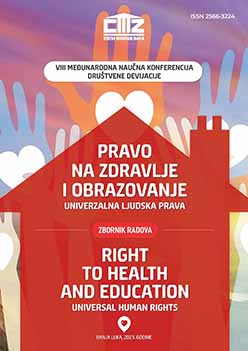SVUGDJE, SVE I SVATKO U PREVENCIJI OVISNOSTI
EVERYWHERE, EVERYTHING AND EVERYONE - ADDICTION PREVENTION
Author(s): Boris Gracin, Danica Romac, Zrinka ĆavarSubject(s): Social Sciences, Psychology, Sociology, Substance abuse and addiction, Social Norms / Social Control
Published by: CENTAR MODERNIH ZNANJA
Keywords: drugs; treatment; prevention; cooperation;
Summary/Abstract: Drug use is highly prevalent in the European Union, about 83.4 million (29%) people used drugs in the last year, of which more men (50.5 million) and mostly cannabis (about 22 m.) and psychostimulants ( about 8.1 m., of which 3.5 m. cocaine, 2.6 m. MDMA – a and 2 m. amphetamine).Considering the complexity and spread of addiction problems as well as the mobility of the population within the EU, it is important to monitor health indicators and compare countries with the aim of better understanding the dynamics of drug use and the most effective measures to reduce harmful consequences what affect all segments of society. Objective and methods: To assess the risk of new challenges in the field of addiction by comparing the health indicators of the Mental Health and Addiction Prevention Department of the Andrija Štampar Teaching Public Health Institute and data for EU countries for the 2022.Results: We observe a light decrease in the total number of people in treatment with the largest share opiates, with a decrease in the number of new and stable number of previously treated, who are getting older (70% aged 45-54) and illness (50% mental/somatic comorbidity), which is similar to EU countries. Considering the indicators of recovery, we note good retention, a stable low incidence of HCV and HIV, as well as employment, which is different compared to EU countries. In EU countries and in Zagreb, research indicates an increase in the use of cannabinoids and psychostimulants, which is accompanied by an treatment demand increase due to psychostimulants, but not cannabinoids. We notice that the institutions refer people to treatment less often since the pandemic. Conclusion: The pandemic has changed the lifestyle, but also the pattern of drug use. Despite the indicators of higher use, we are currently facing a treatment demands decline. The effective response to the challenges includes enhanced prevention at all levels and all institutions with strengthening intersectoral and interstate cooperation.
Journal: DRUŠTVENE DEVIJACIJE
- Issue Year: VIII/2023
- Issue No: 8
- Page Range: 285-294
- Page Count: 10
- Language: Bosnian, Croatian, Serbian

